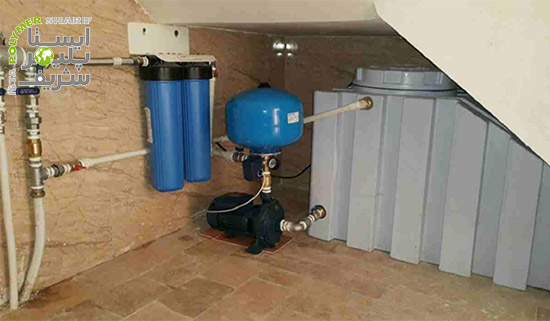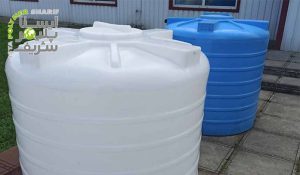One of the major problems that most people face is low water pressure inside buildings. This issue is particularly serious in multi-story buildings and apartments. Therefore, we need to seek solutions to increase the water pressure in buildings. In this article, we have tried to provide solutions for increasing water pressure inside buildings. So if you want more information on this topic, follow the points discussed until the end.
What is Water Pressure?
Initially, before discussing solutions for increasing water pressure inside buildings, it is necessary to explain what water pressure is and its concept. Water pressure is the force that causes water to flow out of pipes and faucets. In other words, the higher the water pressure in the pipe, the more water comes out. Water pressure is measured in units of bars, with each bar lifting approximately 10 cubic meters of water.
Main Factors Causing Reduced Water Pressure in Buildings

There are many factors that can cause reduced water pressure in buildings. Below are some of the most significant factors affecting reduced water pressure inside buildings:
- The small diameter of pipes used in the main water supply to the building
- High water consumption at certain times of the day
- Excessive number and types of connections in the piping system
- The length of the pipe routes to the main water supply source
- Rust and corrosion of pipes
Solutions for Increasing Building Water Pressure
Today, with advancements in science and technology, there are many solutions available for increasing water pressure inside buildings. Below are some of these solutions with brief explanations:
Check the Faucet Filter and Strainer
One of the causes of reduced water pressure is clogging of the faucet filter and strainer. Therefore, faucet strainers should always be checked to ensure that they are cleaned if deposits and minerals from the water have blocked them. To do this, all faucets should be opened and the inside cleaned of any impurities and deposits.
Check the Boiler and Water Heater
Another factor that may cause a drop in water pressure in buildings is a problem with the boiler or water heater. Therefore, if there is a drop in hot water pressure, the cause should be investigated in these two devices. To do this, open the outlet valve of the water heater or boiler fully to ensure there is no leakage. If the pressure drop is persistent, it may be due to deposits inside the pipes or the water heater coils and the boiler. Therefore, the boiler or water heater should be serviced regularly by a technician to resolve issues affecting the water pressure in the building.
Check for Leaks or Holes in Pipes
In buildings where the pipes are located outside, the likelihood of leaks or holes in the pipes is higher. To prevent pipe freezing, it is better to insulate them, as freezing can cause pipes to burst, leading to leaks, holes, and consequently reduced water pressure.
Install a Pump

One of the ways to increase building water pressure is by using a pump. Installing a pump is one of the most fundamental and effective solutions for increasing water pressure. With the installation of a pump, the water pressure significantly increases. Pumps are often used in multi-story buildings and apartments. A pump is a device that, when placed on the meter, increases the water pressure to reach higher floors.
Increase the Diameter of Main and Principal Pipes
Using larger diameter pipes for the main and principal pipes greatly impacts the increase in building water pressure. This is because if the main pipes have a small diameter, even the smallest deposit inside them can narrow the water outlet path, which leads to reduced water pressure. There is no need for complete repiping; only the main and principal pipes need to be replaced.
Other Effective and Recommended Solutions for Increasing Water Pressure

As mentioned, there are many ways to increase building water pressure. The above section covered some of the most common methods. Here, other solutions are briefly listed, including:
- Using water storage tanks on top of the building
- Using mini-pumps in small residential units
- Using pressure-boosting valves (these valves have thin pipes that first trap water and then release it under pressure)
- Installing water purifiers on faucets
- Opening the main building valve or meter valve fully
Conclusion
Reduced water pressure in buildings is a common issue, especially during the warm seasons. In multi-story buildings and apartments, this problem is quite evident and disrupts the lives of residents. Therefore, essential measures must be taken to address it. In this article, we have mentioned some of the key methods and solutions for increasing building water pressure. One of the most helpful methods for increasing water pressure in buildings is installing a suitable water tank. It is important to identify the factors affecting the reduction of water pressure first, then address those specific issues. If you wish to purchase various types of tanks, you can contact us at 02144787934 and 02144787935.






